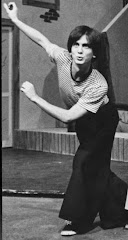
The inspiration for this week's Dance Party is a Show Business Legend. That term is bandied about all too frequently, in my opinion, but for this guy, it suits.
Arthur Laurents
He was 93 when he died yesterday, and was still working, having received his most recent Tony nomination only two years ago, at the age of 91. He was a librettist, a playwright, a novelist, and a screenwriter, as well as a stage director and innovator. It can be argued that he helped reshape the American Musical Theatre with his bold musicalization of the Romeo and Juliet story.
a playwright, a novelist, and a screenwriter, as well as a stage director and innovator. It can be argued that he helped reshape the American Musical Theatre with his bold musicalization of the Romeo and Juliet story.

The concept of updating the tale of the warring Capulets and Montagues for a modern audience had been floating around for years. Laurents himself had written an early draft, called East Side Story, with the conflict surrounding a Catholic boy falling for a Jewish girl. Thankfully, that "Bridget Loves Bernie" concept was later aborted, and the story became about rival street gangs.
 With Laurents as librettist, Jerome Robbins as director/choreographer, and Leonard Bernstein as composer, Arthur brought a young Stephen Sondheim into the mix, launching that genius's career in the bargain.
With Laurents as librettist, Jerome Robbins as director/choreographer, and Leonard Bernstein as composer, Arthur brought a young Stephen Sondheim into the mix, launching that genius's career in the bargain.  The "serious musical" was a foreign animal in the late 50s, and the team had a difficult time getting to production. Laurents's concern as book writer was to make the gang members sound like gang members, without using curse words which would not be accepted on the Broadway stage of the period. He was smart to avoid using current colloquialisms, realizing it would date the piece, so he invented his own slang for the show. There are other, bigger hits on Arthur Laurents's resume, but in my opinion, West Side Story was the most important work of his career.
The "serious musical" was a foreign animal in the late 50s, and the team had a difficult time getting to production. Laurents's concern as book writer was to make the gang members sound like gang members, without using curse words which would not be accepted on the Broadway stage of the period. He was smart to avoid using current colloquialisms, realizing it would date the piece, so he invented his own slang for the show. There are other, bigger hits on Arthur Laurents's resume, but in my opinion, West Side Story was the most important work of his career.
That career included more than a handful of films, including the Hitchcock thriller Rope. Based on a British play, Laurents was hired to translate this tale of two effete...ahem..."roommates" who commit a murder, stuff the body in a wooden chest, then hold a dinner party using the chest/coffin as the buffet table.

 Arthur bedded the film's star Farley Granger, and set to work playing cat and mouse with the Hays Code. The leading characters' homosexuality was never overtly conveyed, and most audiences missed it completely. Laurents later wrote that James Stewart, playing the boys' slightly older mentor, was never even aware he was playing a gay character.
Arthur bedded the film's star Farley Granger, and set to work playing cat and mouse with the Hays Code. The leading characters' homosexuality was never overtly conveyed, and most audiences missed it completely. Laurents later wrote that James Stewart, playing the boys' slightly older mentor, was never even aware he was playing a gay character.
Laurents's other film projects included 1956's Anastasia, the semi-true story of the woman claiming to be the youngest daughter of the last Czar of Russia, which earned Ingrid Bergman an Oscar.
 He translated his own novel from the mid-70s, The Way We Were, into one of Streisand's biggest hits (she doesn't need a first name in these pages), and his final film, 1978's The Turning Point, brought two Hollywood royals together.
He translated his own novel from the mid-70s, The Way We Were, into one of Streisand's biggest hits (she doesn't need a first name in these pages), and his final film, 1978's The Turning Point, brought two Hollywood royals together.
Arthur had a knack for writing compelling melodrama, and you couldn't take your eyes off Shirley Maclaine and Anne Bancroft as two aging ballerinas who made conflicting choices in life.
 Their catfight, filmed on the terrace of the Shubert Theatre in Los Angeles, was pure gold; the Academy thought so, too, and the film earned a whopping 11 Oscar nominations, including one for our hero's script.
Their catfight, filmed on the terrace of the Shubert Theatre in Los Angeles, was pure gold; the Academy thought so, too, and the film earned a whopping 11 Oscar nominations, including one for our hero's script.  Dancers Mikhail Baryshnikov and Leslie Browne also received nods for their film debuts, as did the leading ladies. The Turning Point has an ignominious distinction: along with The Color Purple, it holds the record as being the film most nominated for the Oscar without winning any awards.
Dancers Mikhail Baryshnikov and Leslie Browne also received nods for their film debuts, as did the leading ladies. The Turning Point has an ignominious distinction: along with The Color Purple, it holds the record as being the film most nominated for the Oscar without winning any awards.That's alright, Arthur has several Tonys to make up for his snub.
 Hallelujah Baby in 1968 won the Best Musical award, which Laurents shared as book writer. His direction of the original La Cage Aux Folles also won the Tony.
Hallelujah Baby in 1968 won the Best Musical award, which Laurents shared as book writer. His direction of the original La Cage Aux Folles also won the Tony.  His original play, Time of the Cuckoo, became the Katherine Hepburn film Summertime, and a decade later, became the musical Do I Hear a Waltz? He was the director who put Streisand in her first Broadway show, I Can Get It For You Wholesale,
His original play, Time of the Cuckoo, became the Katherine Hepburn film Summertime, and a decade later, became the musical Do I Hear a Waltz? He was the director who put Streisand in her first Broadway show, I Can Get It For You Wholesale, 
and he both directed and wrote the book for one of the most prestigious musical failures in history, Sondheim's Anyone Can Whistle. He did the same double duty in 1991, when the attempt to musicalize the Thin Man series of films became Nick and Nora, which Laurents claimed to be the "biggest and most public" flop of his career. That 1991 fiasco, starring Barry Bostwick, Joanna Gleason, and Christine Baranski, was Arthur's last attempt at an original musical.

There is so much more to be said about Arthur Laurents; after all, he wrote and
 directed for the stage for 65 years. During that time, his prickly personality alienated many of his colleagues, and even his own memoirs can't hide the fact that he was a bitchy queen.
directed for the stage for 65 years. During that time, his prickly personality alienated many of his colleagues, and even his own memoirs can't hide the fact that he was a bitchy queen.  But his body of work speaks for itself, as does this week's Dance Party. It comes from what most people believe to be Arthur Laurents's masterpiece, Gypsy. (As I wrote at the beginning of this lengthy entry, I believe West Side Story had the greater influence on the development of the musical genre, but why quibble? BTW, I wrote a bit more about Gypsy a while back, when Karl Malden died). Arthur wrote the libretto, with music by Jule Styne and lyrics by Sondheim, in his second Broadway show. Though Laurents did not direct the original production, he took the reigns for the first
But his body of work speaks for itself, as does this week's Dance Party. It comes from what most people believe to be Arthur Laurents's masterpiece, Gypsy. (As I wrote at the beginning of this lengthy entry, I believe West Side Story had the greater influence on the development of the musical genre, but why quibble? BTW, I wrote a bit more about Gypsy a while back, when Karl Malden died). Arthur wrote the libretto, with music by Jule Styne and lyrics by Sondheim, in his second Broadway show. Though Laurents did not direct the original production, he took the reigns for the first  revival starring Angela Lansbury, the second revival starring Tyne Daly, and the most recent revival, starring Patti Lupone. All three actresses won the Tony; in fact, the only Broadway
revival starring Angela Lansbury, the second revival starring Tyne Daly, and the most recent revival, starring Patti Lupone. All three actresses won the Tony; in fact, the only Broadway Mama Roses to fail to win the Tony were Ethel Merman and Bernadette Peters, neither of whom were directed by Laurents.
Mama Roses to fail to win the Tony were Ethel Merman and Bernadette Peters, neither of whom were directed by Laurents. At the age of 90, Arthur still clearly knew what he was doing. Here is the big Act One finale, as performed on the Tony Awards show a few years ago. Lupone was about to win her trophy, and her costars in this clip, Laura Benanti and Boyd Gaines, also won for their performances here.
At the age of 90, Arthur still clearly knew what he was doing. Here is the big Act One finale, as performed on the Tony Awards show a few years ago. Lupone was about to win her trophy, and her costars in this clip, Laura Benanti and Boyd Gaines, also won for their performances here.

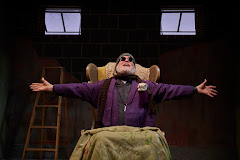




























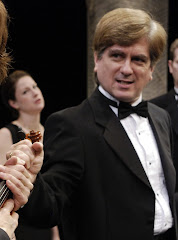
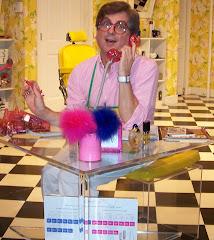

,+Olney+Theatre+Center,+2004.jpg)



,+Shakespeare+Theatre+Company,.jpg)
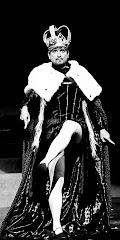

,+Warehouse+Theatre,+1999.jpg)
,+Are.jpg)
,+Everyman+Theatre,2002.jpg)
,+First+Nationa.jpg)
,+Shakespeare+Theatre+Company,.jpg)



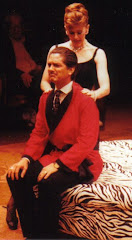

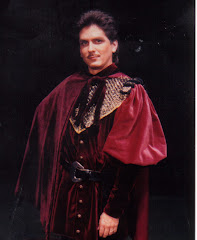
,+Granada+Th.jpg)
,+Globe+Playhouse,.jpg)
,+CSUN,+1976.jpg)
